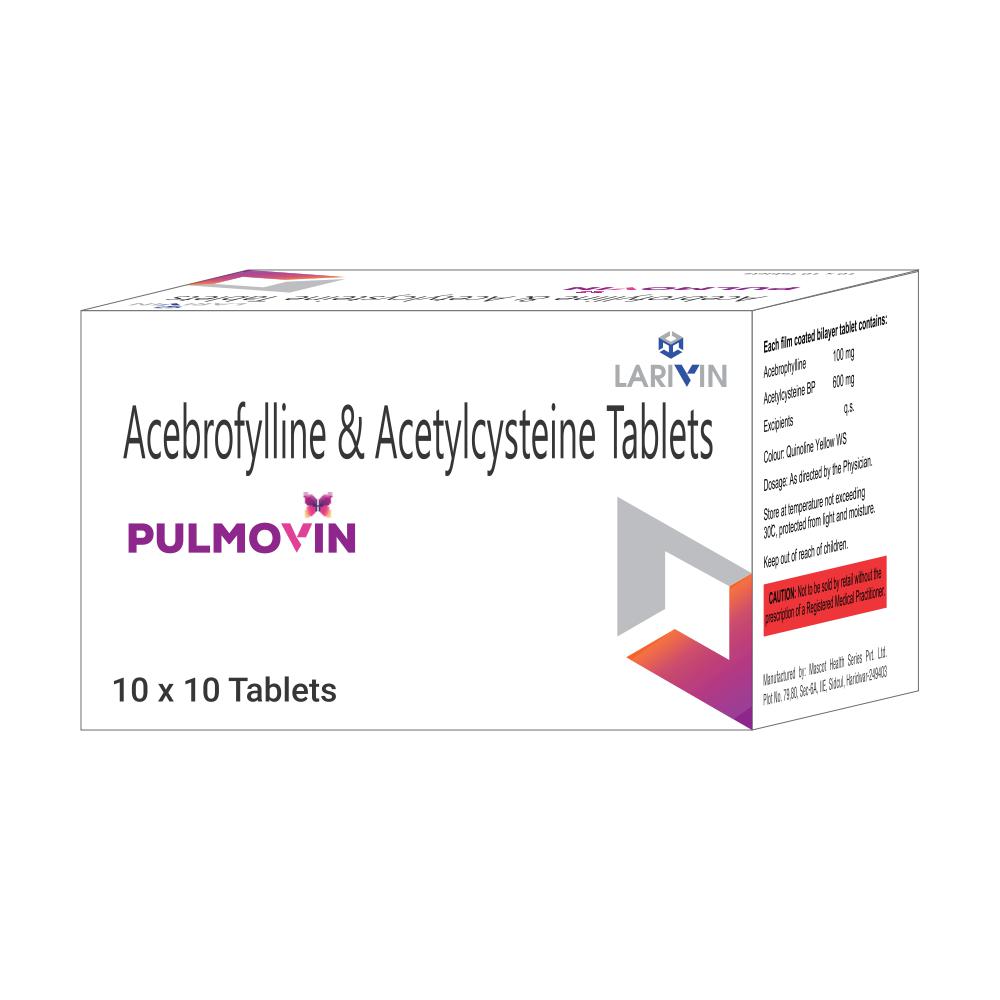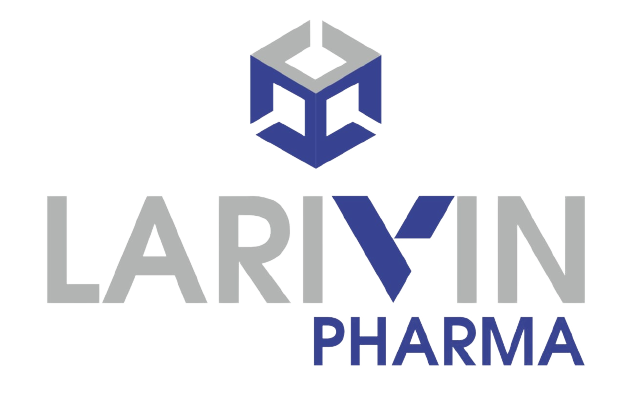- 044-24812581
- No.32, First Floor, Varadharaja Swamy Nagar, Krishna Nagar, Maduravoyal, Chennai 600095
- +91 7845883586
- info@larivinpharma.com
PULMOVIN

Pulmovin
Acebrophylline 100 mg + N-Acetylcysteine 600 mg Tablets
Key Benefits:
Acebrophylline:
- Bronchodilator: Helps relax and open the airways, improving airflow and reducing breathlessness in patients with obstructive lung diseases.
Acetylcysteine (NAC):
- Mucolytic Action: Breaks down mucus, making it easier to expel, which is particularly beneficial for patients with COPD and chronic bronchitis.
- Antioxidant Action: Protects lung tissue from oxidative stress, reducing inflammation and the progression of chronic lung diseases.
Pack Size:
- 10 x 10 tablets
Dosage:
- T.I.D (Three times daily, as prescribed by a healthcare professional)
Indications:
- Chronic Obstructive Pulmonary Disease (COPD)
- Asthma
- Chronic Bronchitis
Synergy Benefits in COPD:
- Enhanced Airway Clearance: The combination of Acebrophylline and N-Acetylcysteine in Pulmovin offers dual benefits for COPD patients. Acebrophylline works as a bronchodilator, relaxing and widening the airways, while N-Acetylcysteine acts as a mucolytic, breaking down and thinning mucus. This synergy results in improved airway clearance, making it easier for patients to breathe.
- Comprehensive Management of COPD Symptoms: By combining the bronchodilatory effects of Acebrophylline with the mucolytic and antioxidant properties of N-Acetylcysteine, Pulmovin provides comprehensive management of COPD symptoms. This combination helps reduce coughing, wheezing, and mucus buildup, leading to better overall lung function.
- Reduced Exacerbations: The antioxidant action of N-Acetylcysteine helps protect the lungs from oxidative stress and inflammation, potentially reducing the frequency and severity of COPD exacerbations.
Precautions:
- Liver and Kidney Impairment: Use with caution in patients with hepatic or renal dysfunction.
- Gastrointestinal Issues: Patients with a history of gastrointestinal ulcers should use this medication cautiously.
Adverse Events:
- Common: Nausea, vomiting, stomach discomfort, headache, and dizziness.
- Serious: Allergic reactions, such as rash, itching, swelling, and breathing difficulties.
Disclaimer:
This information is provided for educational purposes only. For personalized medical advice and treatment options, consult a healthcare professional.
